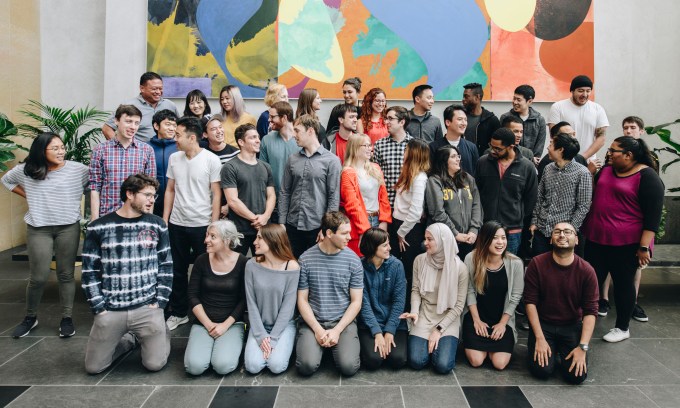The most interesting thing about Burning Man, says me, is that it’s a testbed for a post-scarcity society. The irony of course is that such a testbed requires enormous amounts of money and resources, in a highly hostile and inaccessible environment. That’s how far you have to go to get away from the monetary / scarcity hierarchies of our world.
It’s a lot of other things, of course — the world’s biggest, craziest, and most spectacular party, a huge EDM festival, a massive outdoor art gallery (both ephemeral and permanent — museum curators go out there to inspect the work with an eye towards adding to their collections), an experimental community, a secular pagan ritual, a set & setting for psychedelics, a holiday / reunion with one’s friends, etcetera etcetera. Amusingly it is widely misunderstood as a hippie event, when its flamethrowers:guitars ratio is roughly 100:1 and its mottos include “Safety Third” and “Keep Burning Man Potentially Lethal.” It is also even, sometimes, very weirdly, misinterpreted as some kind of holiday-hackathon extension of Silicon Valley.
That last misunderstanding is instructive. The list of events this year included a so-called ‘VC/entrepreneur networking event and pitch session.’ I did not attend, but a close friend did, and reported “it was the ultimate Poe’s Law event … many people were genuinely crestfallen when they realized it was a joke.” It seems that the concept of a place that isn’t so much opposed to external social hierarchies as it is, much more interestingly, orthogonal to them — that’s a hard one for some people to to wrap their heads around.
It’s true that Burning Man is very influential in the Valley, as this excellent Stanford News piece discusses. It’s true that there is a lot of amazing technology out there — this year featured a glorious swarm/murmuration of 600(!) drones, paired twenty-foot Tesla coils, a whole panoply of robots, etc. But its makers go to show off what they have built to their community, not in the hopes of filthy lucre.
Don’t get me wrong. This experimental desert community very much has its own hierarchies, its own social capital, its own parasites, its own textbook full of unwritten rules, its own perfectly acceptable (indeed, proudly championed) logos. But the idea, at least, is: everyone works; everyone builds (if only a tent); everyone fights, and loses to, the dust; everyone amasses social capital by giving things and experiences rather than earning them; and everyone — whether riding atop a massive fire-breathing art car, or huddled in a mini-tent in the camp allotted to those bus riders who have nowhere else to go — is equally a participant, whether just helping and collaborating with those strangers in your immediate vicinity, or building some massive art/tech project for all to enjoy.
This orthogonality to external hierarchies, this competition to give rather than to take, is what makes it a fascinating de facto testbed for a post-scarcity society, among other forms of experimental community. And maybe that’s why those who come but don’t participate in any community at all are so deeply scorned, loathed, and despised.
I refer, of course, to the infamous “turnkey camps” of (often very) wealthy people who pay money to have their hexayurts erected, their food provided, their experience guided and curated — to be spectators at the spectacle, basically. To exist differently from everyone else at the event. To bring their hierarchical upper-tier existence from the outside world to the playa; to infect our testbed with boring old capitalism.
It’s true that rich people, especially from the Valley, have been coming to Burning Man and enjoying expensive luxuries there for a very long time. In 2001, Larry and Sergey chose Eric Schmidt as Google’s CEO in part because he was the only candidate who had been to Burning Man. Mark Zuckerberg once choppered in and spent an afternoon giving away grilled cheese sandwiches. Elon Musk dismissed the TV show “Silicon Valley” because it didn’t reflect the side of the Valley he saw at Burning Man. But they still made that happen themselves. It’s only been over the last few years that the experience has — allegedly — been for sale as a package deal.
This makes people very angry. Mostly, I think, because they are afraid. Capitalism is basically the Borg; it infects and subsumes everything it touches. Burning Man will become just another big party festival, is the fear, no longer an experimental community, much less a post-scarcity testbed.
And yet. I happened to spend Saturday night surrounded by a bunch of very clean, very wealthy people from a turnkey camp. There were old men in civilian shorts; young men in completely spotless, glittering, top-end multi-thousand-dollar burnerwear; a woman in a don’t-look-at-me-I’m-totally-not-a-celebrity custom full-face golden mask. They acted as a classic tour group, except instead of following a flag, their lead sherpa held a ten-foot length of quarter-inch rebar topped with a blinking LED heart.
And what I felt most, after I got over my initial resentment, was how sorry I was for them. I had solo camped in dusty squalor in the aforementioned bus camp … and I had clearly had a far more interesting and enjoyable time. Granted, I’m (relatively speaking) a crusty veteran of the event, but I suspect I would have had I been a virgin, too. And I think, as they looked around at the seventy thousand souls around them, many of whom were also very wealthy and could have purchased the turnkey experience, but instead chose to pour in an enormous amount of effort and experimentation, to construct enormous machines and/or monumental works of art, because they expected the rewards to be great — I think those much-loathed tourists knew this too.
So never mind their invasion; I expect Burning Man to remain remarkably resistant to capitalism’s Borg, and therefore an interesting experimental proving ground — for cultures, communities, and technologies — for the foreseeable future. (As well as a completely ridiculous party populated by completely ridiculous people, which is also very much one of its faces.) I don’t expect the turnkey tourists to convert. They’re too committed to their own hierarchies. But I do think we live in a very interesting time of technology-enabled cultural and community experimentation, and, as silly and over-the-top as Burning Man can seem and be, those experiments there are genuinely valuable.






 Fleischer’s background at Disney makes her a good fit for the role. Before working as head of merchandise, she was the Senior Vice President of retail & merchandise for Parks & Resorts, where she oversaw merchandise product strategy, product development, planning, visual merchandising, store design, supply chain and logistics.
Fleischer’s background at Disney makes her a good fit for the role. Before working as head of merchandise, she was the Senior Vice President of retail & merchandise for Parks & Resorts, where she oversaw merchandise product strategy, product development, planning, visual merchandising, store design, supply chain and logistics.